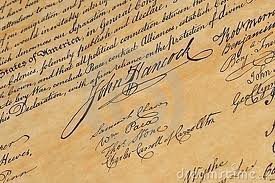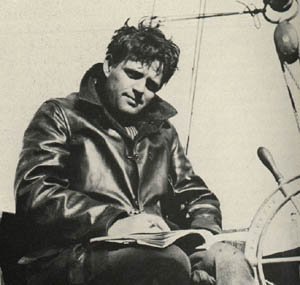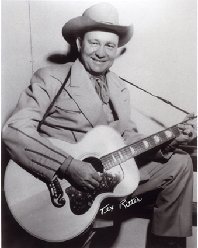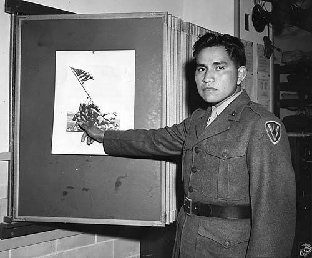
Have you ever been a flower girl, a bridesmaid, or caught the bouquet at a friend’s wedding? All of these customs are expected at modern weddings, but these wedding traditions actually date back to ancient times. Since the origin of marriage about 23,000 years ago, different cultures have created their own wedding customs. Many of these customs have stood the test of time and have evolved into the wedding traditions we are familiar with today.
The origin of marriage dates back to 23,000 years ago when hunter-gatherers became farmers, and gender roles around the household started to form. Males became responsible for gathering food, while females stayed at home to rear children. Thus, marriage soon became necessary as a way to ensure the survival of their offspring.
This wedding tradition dates back to the origin of arranged marriages. Traditionally, the groom’s family would not allow him to see his bride until the wedding. This is because if he didn’t like her looks, there was a chance that he might not agree to marry her. Therefore, the veil was used to conceal the bride’s appearance up until the very moment in which they were to be married.
Since cakes represent fertility, Ancient Romans would bake wheat cakes and break them over the bride’s head. Soon it became customary to stack these wheat cakes one on top of the another, as tall as they could go. The bride and groom were challenged to kiss over the tower without knocking it over. If successful, they’d enjoy a lifetime of good fortune as a couple.
Wedding ring...
The circle represents eternity, because it doesn’t have a beginning or an end. During ancient times, women would wear rings made of papyrus around their wrists and ankles. Romans then began to substitute the material with iron, which ultimately led to the use of gold to make the first betrothal rings. The tradition of a diamond engagement ring was started by Archduke Maximilian of Austria when he proposed to Mary of Burgundy. Like circles, diamonds have long been considered as symbols of eternity because they are the hardest gems on earth. The placement of the ring on the fourth finger came from the Egyptians who believed that it was the finger that contained the vein that connects to the heart.
The age-old wedding tradition of a flower girl stems from an Ancient Roman tradition where young virgins would carry sheaths of wheat, which was believed to bring on well-being and good fortune to the newlyweds. Over time the sheaths of wheat have been replaced with flowers that are scattered along the path that leads up to the altar.
In Ancient Rome, the purpose of having bridesmaids at a wedding was to protect the bride. The bridesmaids would each wear the same dress as the bride in order to confuse the evil spirits and prevent them from finding her. As a result, the couple would avoid being cursed on their wedding day.
Rice and other grains have long been regarded as signs of prosperity and fertility. Therefore, the practice of throwing rice at a wedding is symbolic of showering the couple with good fortune. Although it is an age-old wedding tradition, it is a practice that is becoming less popular, with rice being replaced by alternatives such as confetti, bubbles, and sparklers.
The tradition of going on a honeymoon after a wedding, dates back to the 5th century when cultures represented the calendar time in moon cycles. Once married, a newlywed couple would drink mead, an alcoholic beverage made of honey, a tradition that would take place during their first moon of marriage.
The tradition of having groomsmen as part of the wedding, comes from the ancient tradition of kidnapping the bride. Before a couple could get married, a man had to employ his fellow friends or warrior companions to help him fight off other warriors and prevent the bride’s family from finding the couple. The groom’s main warrior companion would be the equivalent of the “best man” at a wedding.
During Victorian times, a pageboy was responsible for carrying a bride’s train down the aisle along with a prayer book. At the same time, Victorians began to place the ring on small pillows as a display of their wealth. This is because pillows used to be very expensive and were luxury items that only the elite members of society could afford. Eventually, it became the pageboy’s responsibility to carry the ring pillow down the aisle and is a tradition that has evolved into the ring bearer that we are familiar with today.
Gather up the gang, 'cause they're not gonna want to miss out on their serving of these All-American Fish Cakes. These seasoned and pan-fried patties are bursting with flavor! The only thing that could make 'em any better is topping them with your favorite sauce!
- 1 pound U.S. farm-raised catfish fillets
- 1 cup panko bread crumbs
- 1/4 cup mayonnaise
- 1 egg, beaten
- 1 tablespoon lemon juice
- 3 teaspoons Worcestershire sauce
- 2 teaspoons Dijon mustard
- 3 teaspoons seafood seasoning (Old Bay)
- 1 teaspoon chopped fresh parsley
- 1/4 teaspoon salt
- 2 tablespoons olive oil
- Preheat oven to 375º. Coat a baking sheet with cooking spray.
- Place fish on prepared baking sheet and bake 15 to 18 minutes, or until fish flakes easily with a fork; let cool.
- Meanwhile, in a large bowl, combine bread crumbs, mayonnaise, egg, lemon juice, Worcestershire sauce, mustard, seafood seasoning, parsley, and salt; mix well. Flake fish into breadcrumb mixture and mix gently until well combined. Form mixture into 5 large or 10 small equal-sized "cakes."
- In a large skillet over medium heat, heat oil until hot. Add fish cakes in batches and cook 4 to 5 minutes per side, or until golden and heated through.

- Do you wonder how Agatha Christie came to know so much about poisons for her murder mysteries? She was once a pharmacy dispenser during World War I.
- Coca-Cola, Pepsi, Dr. Pepper, and Ginger Ale were all invented by pharmacists
- Before running for President of the United States, Hubert Humphrey earned his pharmacy license and worked in his father’s pharmacy.
- William Procter, Jr., (May 3, 1817 – February 10, 1874) dedicated his career to the science of pharmacy. He wrote the first textbook on pharmacy for students in the United States and advocated for the founding of the American Pharmaceutical Association. His dedication earned him the name Father of Pharmacy.
















No comments:
Post a Comment